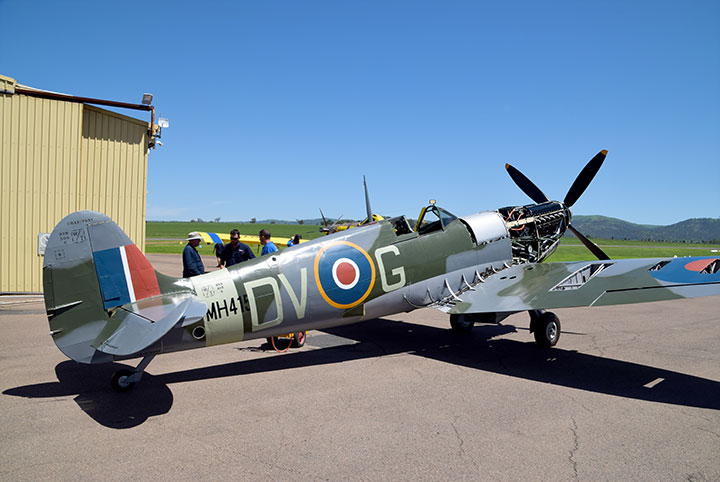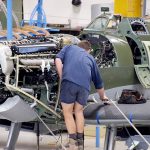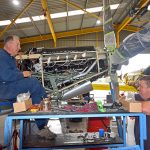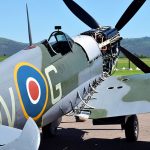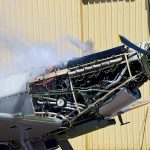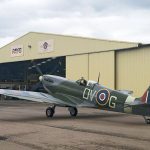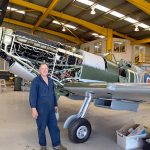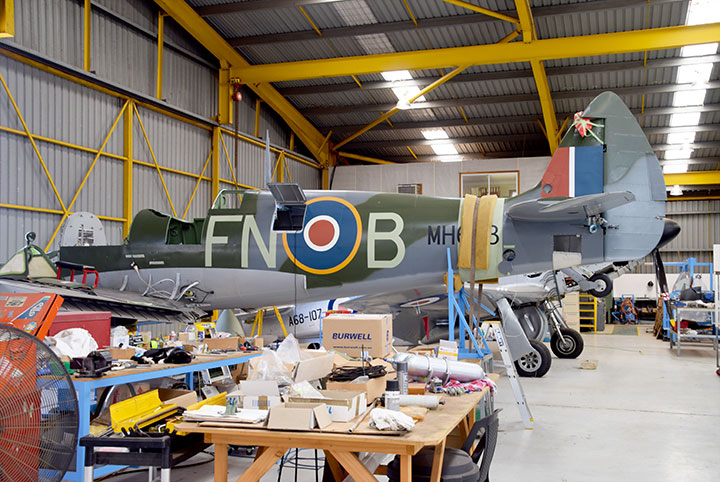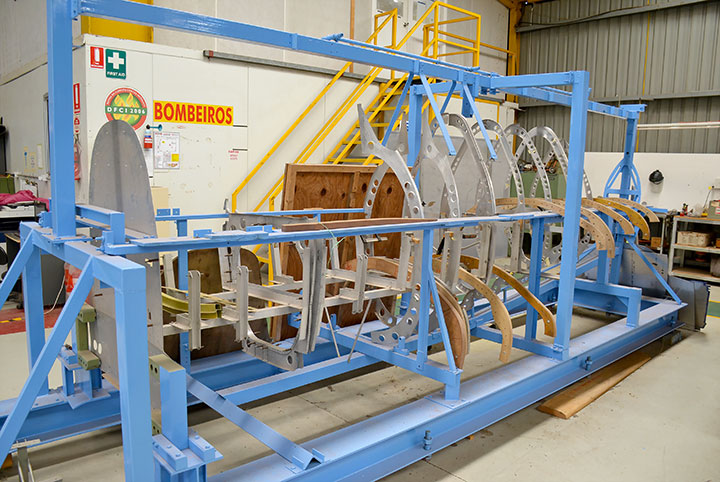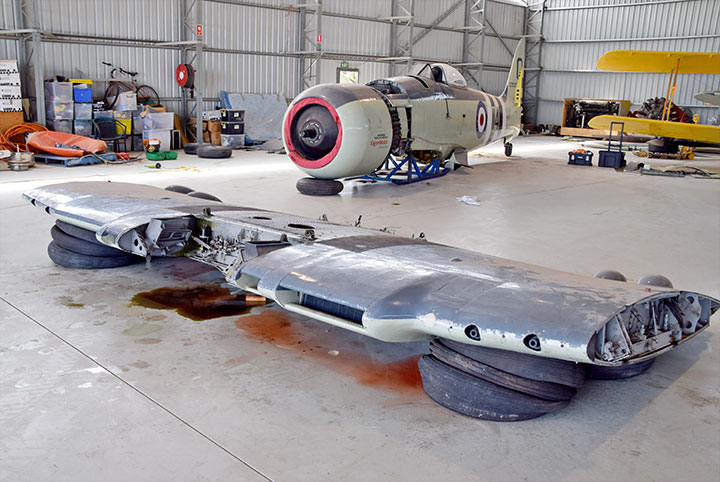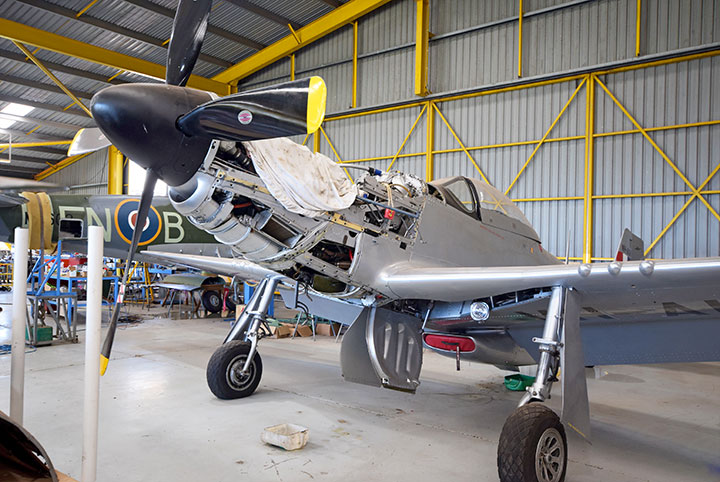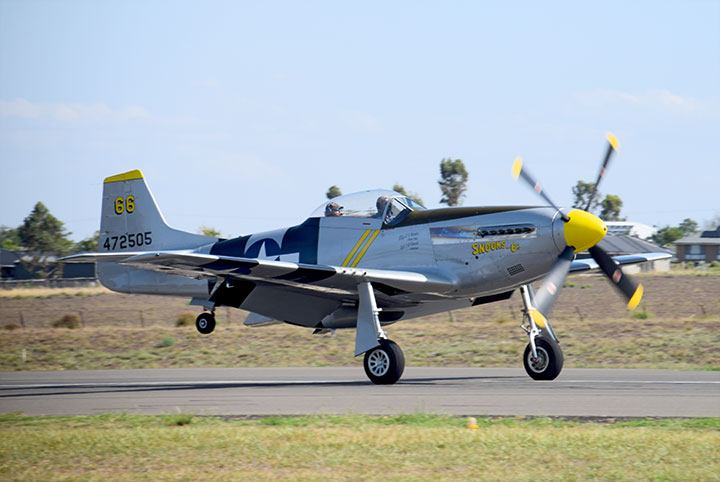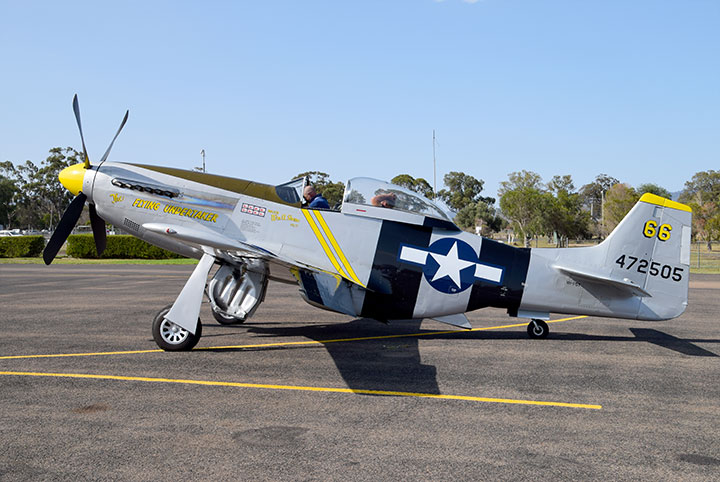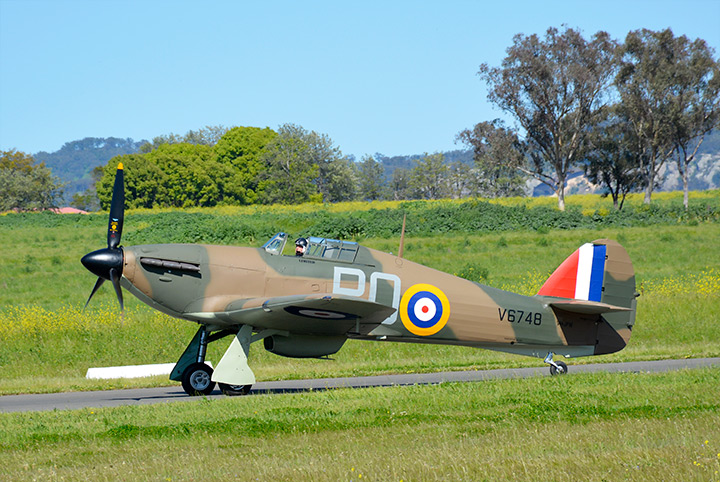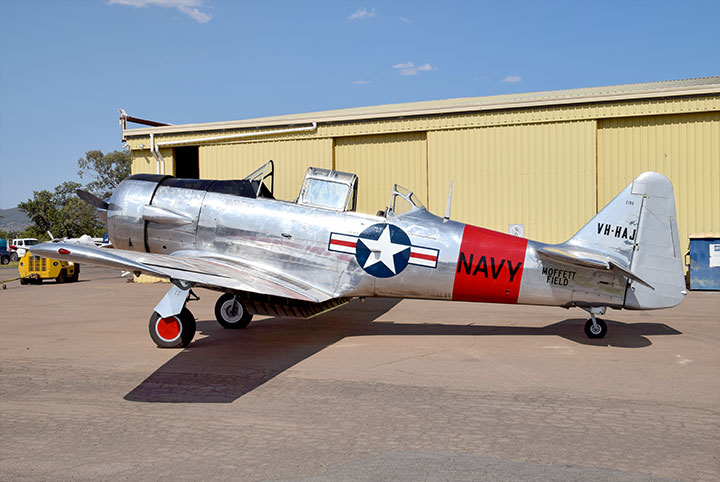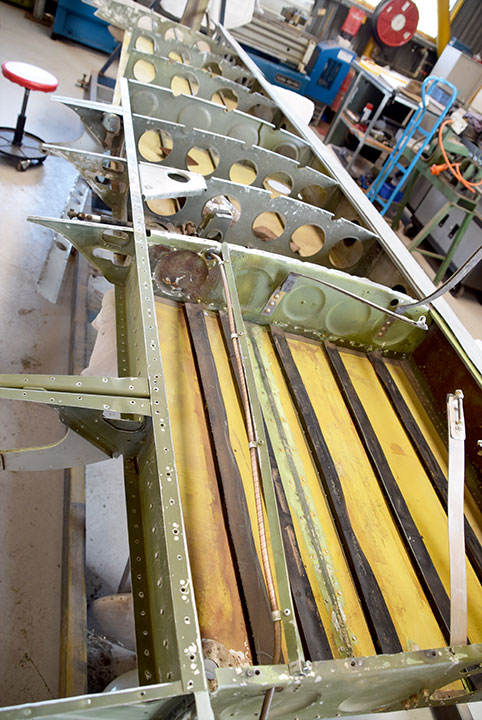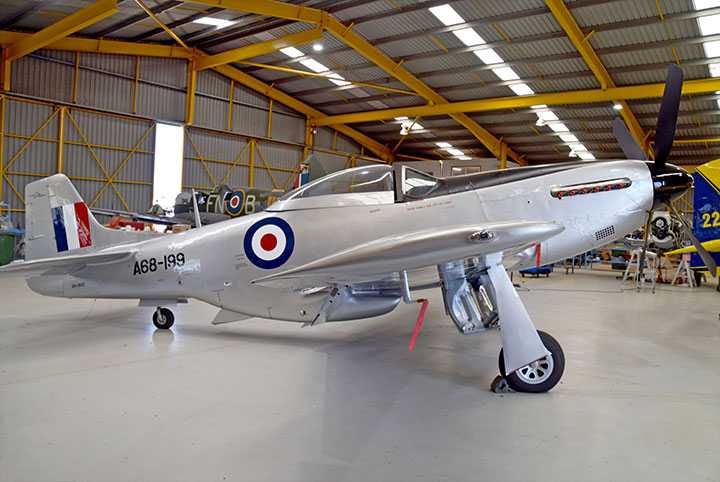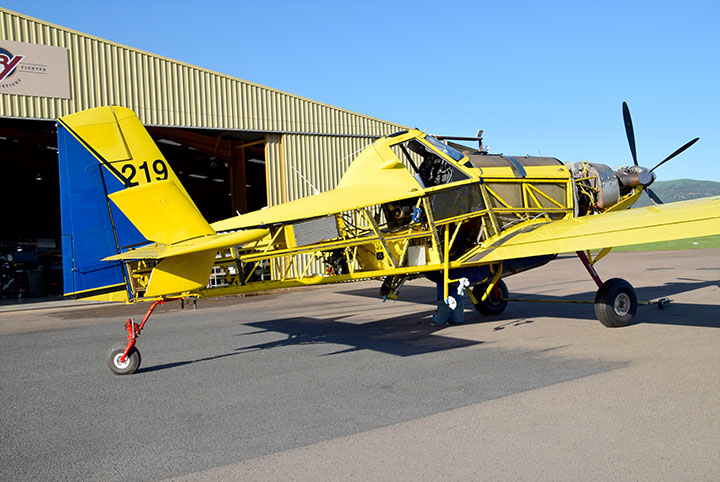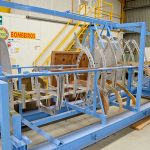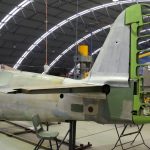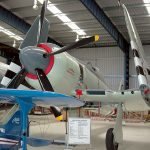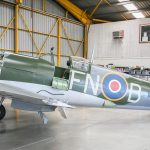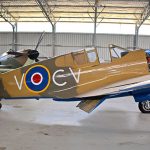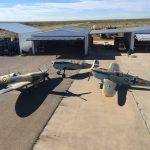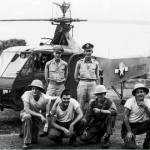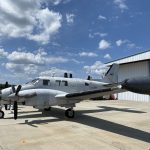There is a fair amount of Spitfire-related news coming from Australia in recent weeks, and we thought our readers would be interested to hear from our good friend John Parker at Warbirds Online who reports on recent progress at Vintage Fighter Restorations (VFR) in Scone, New South Wales, Australia. There is also a roundup of other related news from Scone as well! We will let John continue the story here…
Work still goes on in the warbird world, even in these uncertain times of the global pandemic. It’s good to have a diversion, so here is an update featuring recent restoration work underway at Vintage Fighter Restorations.
The big news is that VFR have completed the restoration of Supermarine Spitfire Mk.IX MH415! The fighter has undergone successful engine runs and taxi trials. Indeed, we were there on the day and the Spitfire looked magnificent in the sun while its engine roared to life. This is the culmination of a long and fulfilling restoration of this famous Spitfire (the aircrafts history was detailed in our previous news article in 2015, Spitfire MH415 to Australia). Ross Pay and the team at Scone are to be congratulated on their fantastic achievement in returning this aircraft to airworthy condition. The standard of restoration is second to none. Unfortunately though, the aircraft has yet to take to the skies as the owners decided to send the aircraft to the UK for its first flight, and to participate in various events during the summer season there. But, of course, shortly after VFR packed and freighted MH415 to Britain, the coronavirus arrived in force, which either cancelled, or rendered in doubt, the Spitfire’s scheduled performance at UK air shows.
MH603, the other Spitfire Mk.IX under restoration at VFR, is now the center of attention in the workshop, with its Rolls-Royce Merlin engine due in from the USA shortly following a lengthy rebuild to as-new condition. In the meantime, the restoration team is hard at work on the final fit-out of the electrical, hydraulic and fuel systems, as well as the cockpit interior and instrumentation. Furthermore, most of the cowlings and fairings are also now completed, so the aircraft is expected to undergo its ground trials and first flight within a couple of months. MH603 will likely remain in Scone with VFR for the foreseeable future, and participate in various air shows across Australia once they resume after the pandemic.
Supermarine Spitfire Mk.Vc (Trop) BS164/A58-63 is also making steady progress in the fuselage jig at VFR. As previously detailed in our news article in 2019, Squadron Leader E. M. Gibbs, Commanding Officer of No.54 Squadron RAF, shot down five and a half Japanese aircraft in this fighter. The Spitfire wore the fuselage identity letter K, and later DL-K. She gained 54 Squadron’s unique “Nip Glass” decal, instead of the more typical Japanese rising sun emblem, to mark each victory over an enemy aircraft, something unique to Australia. This restoration will not occur at a rapid pace, and will take several years to complete, however Australian enthusiasts will be happy to learn that the owners plan to keep this historic, Australian Campaign aircraft at Scone with Ross Pay’s collection once she is flying again. To be sure, it is likely the most significant Australia-based Spitfire to undergo restoration and will make a great addition to the nation’s vintage military aircraft movement.
One recent departure from Scone included the former Iraqi Air Force Hawker Fury FB.11 VH-SHF (c/n 37723). Readers will recall that her present Australian owner acquired this aircraft at auction a couple of years ago in non-airworthy condition. The owner has decided to send the Fury to the UK for its return to flight.
Work currently proceeds on Ross Pay’s Australian-built CA-18 Mustang Mk.21 A68-107 (VH-AUB). The Mustang is undergoing some airframe work and routine engine maintenance.
On our most recent visit to Scone, a favorite, former resident warbird dropped in for a visit too. North American P-51D Mustang 45-11526, (VH-FST) arrived from Archerfield on its way down south much to the enjoyment of the VFR team. Fighter Pilot of Archerfield currently operate the aircraft; she looks magnificent, and is a credit to her owners. Interestingly, this Mustang was once part of Ross Pay’s stable, and his team performed extensive refurbishment work prior to her sale “up north”.
Hawker Hurricane Mk.XII RCAF 5481 was also out and about on the day of our visit. The beautiful fighter was on her way south for a final air show, before the onset of COVID-19, in the experienced hands of Paul Bennet.
The resident North American T-6G took off for a training sortie around the airfield in the hands of Alex Pay. It was a sight to see in its radiant polished aluminum scheme!
In the VFR hangar, restoration work was also underway on Cessna O-1 Bird Dog 51-12245 following some damage it sustained a few years ago. The wings are currently the focus of extensive repairs.
CAC CA-18 Mustang PR.22 A68-199 has now completed its maintenance and repaint schedule in Scone, and has temporarily moved to Albion Park with the Historical Aircraft Restoration Society (HARS) collection where it will fly at various events. The paint scheme is a real credit to Ross Pay and the team at VFR, as it looks truly magnificent!
On another note, it is easy to forget that Pays main “day job” is actually aerial fire fighting. With the conclusion of what turned into a tragic 2019/2020 fire season, the huge task of maintenance on the resident air attack fleet is underway. Air Tractor Fire Boss “219” was undergoing treatment while we were there. The maintenance crew had removed its Wipline 10000 amphibious floats and replaced them with conventional, wheeled gear. They were preparing the aircraft for painting over its previous owner’s yellow and black scheme with Ross Pay’s fleet colors. These are surprisingly large and complex aircraft, and it was interesting to see the machine with all the access panels removed, revealing the myriad internal systems.
All work is being undertaken safely at VFR, despite the difficulties thrown up by the COVID-19 virus, and it is a credit to Ross Pay and his team for adapting their work practices to meet the current health and safety requirements.
Many thanks indeed to John Parker for this fascinating update. We wish our fellow Australian’s good luck in coping with the current health crisis. Be safe, and be well everyone!







